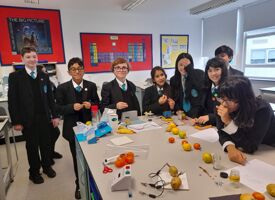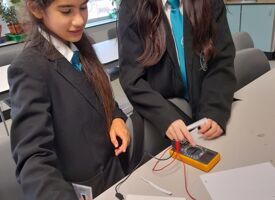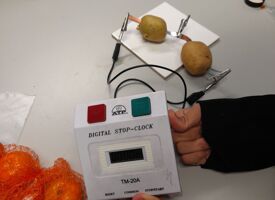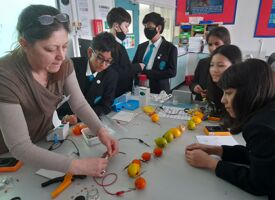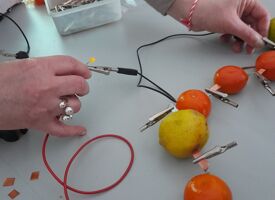KS3 Science Club - Electricity
Posted on: 07/03/2022Did you know that fruits and vegetables can be used to produce electricity? Connecting four lemons in series can provide enough voltage to light an LED!
Last Thursday, our wonderful KS3 physicists constructed batteries from various fruits and vegetables and tested them to see which one will produce the most electric current. To do this, they made small cuts in the fruit/vegetable and inserted two different types of electrodes (copper and zinc). They then connected the metals to either an ammeter or a galvanometer to measure the current. They noticed that the potato was the best battery as it produced the most electric current.
At the end of the session, we wanted to see whether we could turn on a stopwatch. To do this, we first removed the batteries from a stopwatch so that it was completely off, we then connected the stopwatch to our fruit battery. The current produced was large enough to switch on the stopwatch! However, it was not big enough to turn on an LED light, so we decided to connect all our fruits and vegetables in series to make a giant battery, and our LED light was finally working!
This activity enabled students to get an insight into how batteries work. They will look at this in more detail as part of their GCSEs and in A-Level Chemistry.
A massive thank you to Pratik (12P) for his help!
